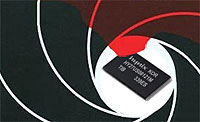 Hard drives are soon to go the way of 8 track cartridges and steam powered radios according to Samsung’s semi-conductor CEO Dr. Chang Gyu Hwang.
Hard drives are soon to go the way of 8 track cartridges and steam powered radios according to Samsung’s semi-conductor CEO Dr. Chang Gyu Hwang.
Coming hot on the heels of the launch of their 16Gb NAND flash chip using 50nm technology, Hwang reckoned that all the hep cats would soon be dumping their unfashionable hard drives and hanging out with the solid-state flash memory crew.
“NAND flash technology development continues to double density growth on an average of every 12 months,” Hwang observed, while quietly giving a nearby hard drive a few hard kicks.
A dimly-lit colleague stroking a white cat added, “This year, it appears clear that NAND will surpass NOR as the most popular flash memory.”
NAND flash memory is currently widely used in digital cameras, mobile phones, USB flash drives and portable music players such as Apple Computer’s groovy new iPod Nano.
 With a cackle in his voice and a size nine sending a RAID array skywards, Hwang reckons that we’ll soon be seeing laptop memory cards with 32GB of memory, based on multiple 16Gb flash chips.
With a cackle in his voice and a size nine sending a RAID array skywards, Hwang reckons that we’ll soon be seeing laptop memory cards with 32GB of memory, based on multiple 16Gb flash chips.
NAND flash uses a 50nm process which shrinks the flash memory to just 0.00625 square microns per bit, 25 per cent down on the previous 60nm process.
Forcing a rough screwdriver into a helpless hard drive, Hwang predicted that these mega-chips will appear late in 2006 or in 2007, based on mass production of the new Samsung chips in the second part of 2006.
If the HD-torturing Samsung head honcho is right, we can expect to see a 32Gb NAND chip this year, enabling hefty 64GB memory cards, followed by 128GB memory cards next year.
With this kind of NAND flash storage capacity, Samsung’s plans to ruthlessly wipe hard drives off the face off the earth could begin to take shape.
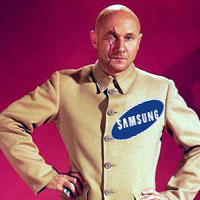 A big advantage of using flash memory in notebooks is that the technology is resistant to the sort of mechanical shocks that can often knacker a hard drive.
A big advantage of using flash memory in notebooks is that the technology is resistant to the sort of mechanical shocks that can often knacker a hard drive.
But the technology isn’t perfect, with flash chips having a finite life in read/write cycle terms and increased memory card costs and power consumption.
With analysts predicting $1.7bn (£930m, €1.38m) in revenues for NAND memory this year, global NAND flash memory revenues are expected to reach $9.4bn (£5.15m, €7.65m) and Samsung is looking to cut themselves a large slice of that lucrative pie.
In another part of their south-Korean HQ, Samsung unveiled a new 7.2-megapixel CMOS image sensor for high-end digital pictures and fusion semiconductors for next-generation smartphones and PDAs.
 Mobile network 3 has announced two new content packages aimed at getting more customers logging on to its mobile Internet services.
Mobile network 3 has announced two new content packages aimed at getting more customers logging on to its mobile Internet services.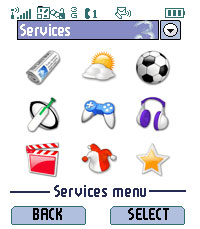 The network asserts that this limitation is to ensure that customers “can be sure that both front pages and sub-pages are viewable, that the speed of download is high and that all the site’s key activities are available”.
The network asserts that this limitation is to ensure that customers “can be sure that both front pages and sub-pages are viewable, that the speed of download is high and that all the site’s key activities are available”. From a technical perspective switchover it is not going to be a walk in the park. A phased switchover to digital by geographical area between 2008 and 2012. And we’ll only know how many people might be unable to get digital television once the analogue signal has been turned off and the digital signal boosted.
From a technical perspective switchover it is not going to be a walk in the park. A phased switchover to digital by geographical area between 2008 and 2012. And we’ll only know how many people might be unable to get digital television once the analogue signal has been turned off and the digital signal boosted. O2 has announced the launch of the o2 Xda Exec, the first PDA and mobile phone combo device to feature 3G.
O2 has announced the launch of the o2 Xda Exec, the first PDA and mobile phone combo device to feature 3G. Reflecting its business focus, the phone comes with Pocket Outlook, Word, Excel, Powerpoint and PDF viewers pre-installed and offers Bluetooth, Wireless LAN, 3G and tri-band GPRS connectivity.
Reflecting its business focus, the phone comes with Pocket Outlook, Word, Excel, Powerpoint and PDF viewers pre-installed and offers Bluetooth, Wireless LAN, 3G and tri-band GPRS connectivity.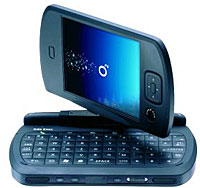 Combined with our service bundle, we believe that the O2 Xda Exec will build on the success of the Xda range, extending our market share still further into 2006.”
Combined with our service bundle, we believe that the O2 Xda Exec will build on the success of the Xda range, extending our market share still further into 2006.” Technical stuff:
Technical stuff: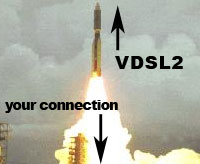 After demonstrating that high-definition television over copper was achievable through networks with increased bandwidth capabilities and compression techniques, France Telecom is looking to develop the technology and is currently testing VDSL2 transmission systems in its R&D Laboratories.
After demonstrating that high-definition television over copper was achievable through networks with increased bandwidth capabilities and compression techniques, France Telecom is looking to develop the technology and is currently testing VDSL2 transmission systems in its R&D Laboratories. All clear on that, now?
All clear on that, now?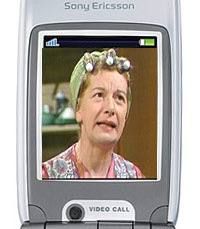 A report by Unstrung Insider claims that Mobile TV is set to become a breakthrough mass-market mobile data service, boosted by pioneering services offered by major global operators such as Orange, Vodafone, and SK Telecom.
A report by Unstrung Insider claims that Mobile TV is set to become a breakthrough mass-market mobile data service, boosted by pioneering services offered by major global operators such as Orange, Vodafone, and SK Telecom. The report comments on the industry expectation that “one-to-many” mass-market mobile TV services may be more efficiently delivered over dedicated mobile broadcast networks using technologies such as DVB-H (Digital Video Broadcast-Handheld), DMB (Digital Multimedia Broadcast), and MediaFLO.
The report comments on the industry expectation that “one-to-many” mass-market mobile TV services may be more efficiently delivered over dedicated mobile broadcast networks using technologies such as DVB-H (Digital Video Broadcast-Handheld), DMB (Digital Multimedia Broadcast), and MediaFLO.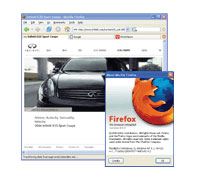 Mozilla have made their first preview of Firefox 1.5 Beta 1 – code named “Deer Park” – available to early adopters, Web developers and Extension writers.
Mozilla have made their first preview of Firefox 1.5 Beta 1 – code named “Deer Park” – available to early adopters, Web developers and Extension writers. Mike Schroepfer, Mozilla’s director of engineering said that automatic updating will reduce the size of patches by 10 to 20 times, explaining that the feature will remove the current requirement for users to download the entire browser to obtain fixes.
Mike Schroepfer, Mozilla’s director of engineering said that automatic updating will reduce the size of patches by 10 to 20 times, explaining that the feature will remove the current requirement for users to download the entire browser to obtain fixes. Toshiba has unveiled its new DVD recorder with the handy ability to set up and record TV programmes via email.
Toshiba has unveiled its new DVD recorder with the handy ability to set up and record TV programmes via email.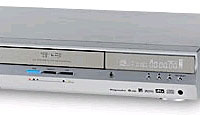 The RD-XS54 comes with Toshiba’s EASY NAVI menu and the TV Guide On Screen Interactive Program Guide for simple, easy-peasy channel navigation and recording scheduling.
The RD-XS54 comes with Toshiba’s EASY NAVI menu and the TV Guide On Screen Interactive Program Guide for simple, easy-peasy channel navigation and recording scheduling. In a feast of conglomeration and convergence, Internet auctioneer giants eBay are swallowing up Luxembourg-based Skype, the world’s leader in Internet phone services.
In a feast of conglomeration and convergence, Internet auctioneer giants eBay are swallowing up Luxembourg-based Skype, the world’s leader in Internet phone services.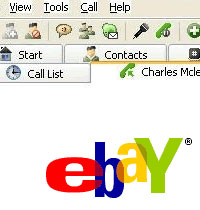 The company generates revenue by charging small fees for calls to non-Skype users and for Skype users to receive calls from callers not using the software. Skype also charge a fee to provide a voice mail service.
The company generates revenue by charging small fees for calls to non-Skype users and for Skype users to receive calls from callers not using the software. Skype also charge a fee to provide a voice mail service.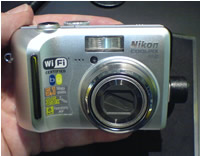 Although on the surface Nikon’s brand new Coolpix P1 and the Coolpix P2 cameras look like standard fare from the photo giant, they’ve got a trick up their sleeve – they both offer Wireless LAN support (IEEE802.11b/g).
Although on the surface Nikon’s brand new Coolpix P1 and the Coolpix P2 cameras look like standard fare from the photo giant, they’ve got a trick up their sleeve – they both offer Wireless LAN support (IEEE802.11b/g).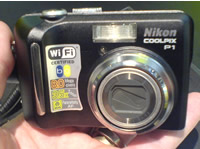 This wireless connection lets users transfer images off the camera’s storage card or transmit them ‘live’ as they’re snapped directly to Nikon’s PictureProject software.
This wireless connection lets users transfer images off the camera’s storage card or transmit them ‘live’ as they’re snapped directly to Nikon’s PictureProject software.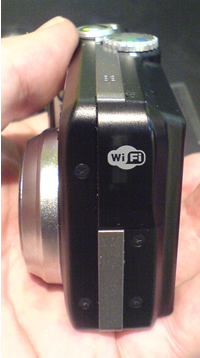 As for the Coolpix P1 and P2 cameras, there’s nothing much to get too excited about, with the two identical cameras offering 8.0 and 5.1 Megapixels respectively with a 3.5x optical zoom (36-126mm equivalent, f2.7 – 5.2).
As for the Coolpix P1 and P2 cameras, there’s nothing much to get too excited about, with the two identical cameras offering 8.0 and 5.1 Megapixels respectively with a 3.5x optical zoom (36-126mm equivalent, f2.7 – 5.2).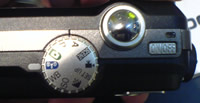 Framing and viewing images is taken care of with a sizeable 110,000 pixels 2.5″ TFT LCD screen and there’s a SD slot and USB 2.0 connectivity onboard.
Framing and viewing images is taken care of with a sizeable 110,000 pixels 2.5″ TFT LCD screen and there’s a SD slot and USB 2.0 connectivity onboard.